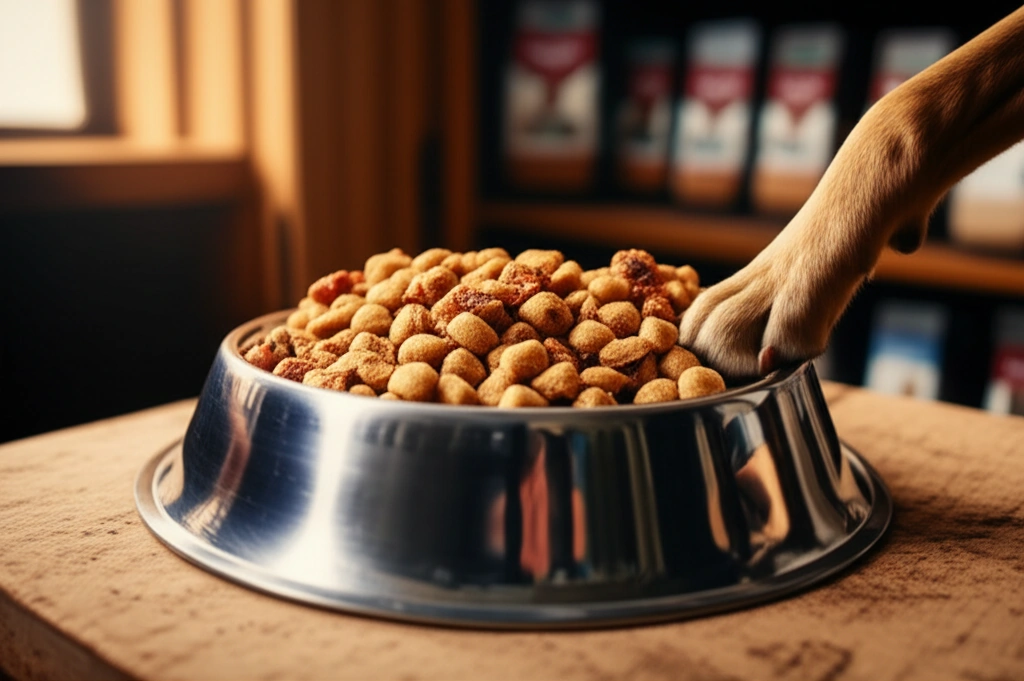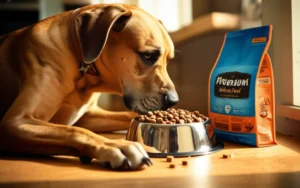Hey there! If you’ve got a big, lovable beast at home, you probably know that feeding them isn’t just about filling their bowl. Finding the best dry dog food for large breeds can feel like a bit of a minefield — a sea of choices, confusing labels, and wild claims. But don’t worry, I’ve got your back. Let’s jump right into what really matters so you don’t have to skim through endless fluff before getting the answers you need.
Right off the bat: large breed dogs have unique nutritional needs that differ quite a bit from their smaller pals. From giant puppies literally growing at lightning speed to couch-friendly seniors who still need joint support, they need food that’s tailored just for them. And the wrong chow? It can lead to joint problems, obesity, or worse.
So, stick with me and you’ll learn how to pick dry food that keeps your big buddy healthy, happy, and bouncing around for years to come. And hey — if you want to know the brands that might be best avoided or trusted, plus some wallet-friendly options, we’ll cover all that too.
Why Large Breeds Need Special Food
Ever wonder why your giant furball can’t just eat regular dog food like your neighbor’s pug? It’s because the growth and health needs of large breeds are a bit more complex. Their bones, joints, and overall metabolism have some extra demands that require special nutrition.
Growing Pains: Large-Breed Puppies
Big pups grow fast — sometimes too fast — and too much calcium or calories can actually cause issues with bone development. Large-breed puppy formulas are specifically designed with a careful balance of calcium and phosphorus to slow down that crazy growth spurt and help prevent joint problems down the road.
Why is this so important? Well, growing too quickly can cause hip dysplasia or other orthopedic problems later in life. So, the formula isn’t just food — it’s a growth management tool.
Adult and Senior Needs
Once your big dog hits adulthood, the focus shifts to joint support, maintaining a healthy weight, and digestibility. Foods rich in glucosamine, chondroitin, and omega-3 fatty acids can be real game changers, helping keep those joints lubed and mobile.
Weight management is key here too. Since large breeds are prone to obesity, their dry food should provide good nutrition without overloading on calories. And as they age, the right formula can support cognitive function and skin health.
Risks of Poor Nutrition
Feeding the wrong food — say, a general adult formula without special consideration — can lead to issues like bloat, obesity, and serious joint diseases. It’s not just about fancy ingredients, but about the right type of protein, fat, and minerals in the right amounts.
What to Look for on the Dog Food Label
Here’s the part where labels start confusing people. Let’s cut through the jargon.
Must-Have Nutrients
| Nutrient | Why It Matters | Typical Ranges for Large Breeds |
|---|---|---|
| Protein | Muscle growth and repair | 22-28% (puppies higher, adults moderate) |
| Fat | Energy and vitamin absorption | 8-15% |
| Calcium & Phosphorus | Bone health and growth regulation | Controlled ratio, usually 1.2:1 to 1.4:1 |
| Glucosamine & Chondroitin | Joint support | Commonly added supplements |
Ingredient Quality
Look for clear, named protein sources — like “chicken,” “beef,” or “salmon.” Avoid vague terms like “meat meal” or “animal by-products.” Also, ingredients like omega-3s from fish oil and natural antioxidants from fruits and veggies are a huge plus.
Watch Out For These
Grain-free diets might sound trendy but watch out: there are ongoing concerns about links between certain grain-free formulas and heart disease (DCM) in dogs. So, unless your vet recommends it, sticking to balanced formulas with grains isn’t a bad thing.
Also, some brands hide behind marketing but use fillers or cheap ingredients that don’t offer real nutrition. You can check dog food brands to avoid to help you steer clear of potential duds and disappointment.
Top Dry Dog Foods to Consider
Alright, time to get into some recommendations. Remember, the best dry dog food for large breeds will depend on your dog’s age, activity level, and health conditions.
Large-Breed Puppies
Whether you’re raising a Great Dane or a Mastiff, formulas made specifically for large-breed puppies keep growth in check. Brands like Royal Canin’s large-breed puppy formula are known for this. They focus on providing balanced calcium and phosphorus while packing in proteins for steady growth.
Adult Large Breeds
For adults, moderate protein, joint-supporting supplements, and controlled calories are the name of the game. Favorites include Purina Pro Plan, Hill’s Science Diet, and Royal Canin dog food — all brands with vet-approved formulations that hit just the right notes.
Seniors
Older giants need lower calories but more joint and cognitive support. Hill’s Science Diet and Nutro offer specialized senior dry dog foods that focus on these aspects.
Budget-Friendly and Bulk Buys
Looking for a bargain? You can snag some great options at Wal-Mart, but be cautious. The best cheap dog food at Walmart can be decent if you pick wisely. Look for formulas with transparent ingredients and avoid overly generic “all life stage” blends.
If you’re interested in cost-savings, searching for the cheapest 50 lb bag of dog food isn’t just about price — quality matters too. Bigger bags aren’t always fresher. You want to strike a balance between cost, ingredient quality, and freshness.
Specialty Diets
If your dog has allergies or a sensitive tummy, limited ingredient or hypoallergenic formulas exist. These help minimize triggers and keep your pup comfortable.
Trusted Brands and Ones to Avoid
It’s tempting to trust every flashy label, but these days you need to be choosy. Brands that invest in veterinary nutritionist expertise and maintain transparency tend to be safer bets. That’s why I always recommend checking out best dog food brands listings for updated reliable info.
Brands like Purina, Royal Canin, Hill’s Science Diet, and Nutro often come out on top because they rigorously meet nutritional standards. On the flip side, steer clear of brands with sketchy ingredient lists, frequent product recalls, or little to no transparency — details you can learn through research or sites that track these factors.
How to Switch Dog Food Without Drama
Switching your big buddy’s food gradually is key — no sudden diet changes, please! Start with about 25% new food mixed with 75% old food. Each day, increase the new food portion until you’re fully transitioned in 7 to 10 days.
Watch how your dog’s digestion and energy levels respond. Loose stools, vomiting, or lethargy? Slow down the transition or consult your vet.
Shopping Smarts: Where and How to Buy
Online stores often offer better deals on bulk bags and subscription pricing — just watch the expiration dates. Pet stores and big-box retailers like Walmart can be convenient, but don’t always have the freshest stock.
For large breeds, investing in quality pays off in the long run. That said, if your budget is tight, you can find some reliable and affordable foods that meet large-breed needs without breaking the bank. Just be sure to compare price per calorie and ingredient quality rather than just the sticker price.
Wrapping It Up
Choosing the best dry dog food for large breeds really boils down to understanding what your giant needs at each life stage and making informed choices. Puppies need that special growth formula. Adults thrive on joint support and weight management. Seniors require gentle, nutrient-rich diets that keep them spry and comfortable.
Keep a watchful eye on labels, opt for trusted brands, and avoid the temptation of quick cheap fixes without good ingredients. If you want a handy cheat sheet on dog food brands to avoid or a roundup of the best dog food brands, those links can really save you time and effort.
Remember: your big pup relies on you for the best fuel possible. Try out a recommended formula for a couple of months, watch their energy, coat, and weight, and adjust as you go. And if ever in doubt, your vet — or better yet, a vet nutritionist — can be a game changer in fine-tuning their diet.
So, what’s your large breed dog currently munching on? Found a favorite yet? I’d love to hear stories or questions anytime. Until then, happy feeding and here’s to many joyful, active years ahead with your big furry friend!












